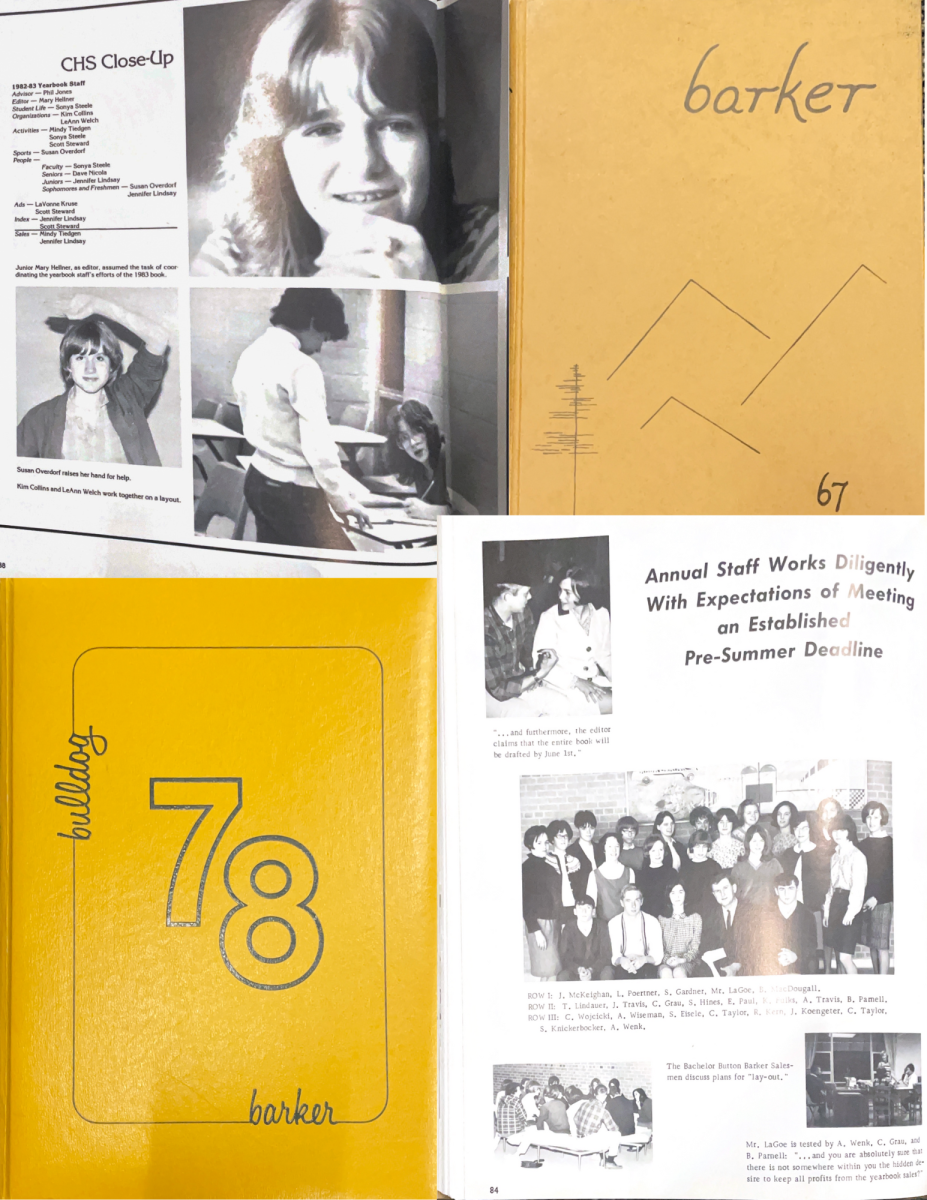Every student knows the feeling of the end of the school year well. Warmer weather and the anticipation of a much-needed break, coupled with the stressful end of the third trimester and the graduation of seniors. Through the years, an end-of-year staple has seemingly always been the yearbook. With clubs and classes dedicated to its creation, it’s hard to imagine a world without the familiar sound of flipping pages and the giggles of classmates as they look through the newest edition.
Yet, the yearbook hasn’t always existed at CHS, and its origins are almost unrecognizable compared to what we currently have. Having to forge the idea of a yearbook from scratch, coupled with the drastically different world the pioneers of the yearbook lived in, has led to a fascinating morph of design and intent throughout the years. This article will serve as a recap of both the changing times and the changing yearbook, as the world and the way students summarize it evolved into what we have today.
The 20s: An Origin Story
While the concept of a yearbook started to become more mainstream in the late 19th century, the idea didn’t hit CHS until 1922. The first couple dozen yearbooks were made in memory of Ed Genter, school janitor, and important figure in many students’ lives.
The yearbook looked incredibly different when it started. It was only given to senior students on “Class Night”, a graduation party before their graduation day. Because of this, they were incredibly senior focused, giving only two pages each to the underclassmen classes. They were called senior annuals, and were almost entirely student-led and produced. This led to a sort of variety show aspect, with comics, jokes, plays, and even short stories.
Included in the back of the annuals was a large section of ads. With catchy taglines like ‘Clothing for lad and dad’ and ‘Scarfs are gay,’ they add an antique feel to the already historical annuals.
The 30’s: The Depressive Years
As the country plummeted into the Great Depression, the annuals while remaining a facet of graduation, became sparser. Although the page count diminished, the character and spirit within the books shone through. Now with a larger number of students working on them, things such as collages, personalized quotes, and comics based on the students have become commonplace.
With the country’s spiral into tougher times, the students of CHS continued to hold beacons of hope and light. These annuals are a clear reminder that while things were getting rough, they had as much fun and good times as they could manage, which is incredibly admirable to look back on.
As mentioned, they started doing personalized senior quotes during this time. Here are some of the highlights:
“I’d swim the Hellespont for no woman”
“He would not dare be as funny as he could be”
“Like a song – short and sweet”
The 40’s: An Era of Extravagance
As the world transitioned out of the Depression and into the war-torn decade of the forties, Chelsea’s population began to grow. And as the halls of Chelsea High were filled with more students, the yearbook began to really flourish.
Suddenly booming with more creative and social opportunities, the students of CHS took advantage. Now with baseball, track, and tennis as included sports, and the FFA and HI-Y starting up faculty-led clubs, the 40’s were truly the start of student involvement and enrichment.
These new activities found themselves front and center in the annuals, being mentioned in the Class History and the Class Play. Their graduation was still a performance, everyone’s imagination running wild with what their futures might hold in store for them. This showed with the addition of Class Prophecies, which were student run predictions for what each and every senior would be doing in 15 years’ time. Some of these bordered on completely absurd, with “selling popcorn in the graveyard” and “moving to Egypt to study the ancient art of embalming” included as prophetic visions of their classmates’ futures.
The 50’s: The Start of Modernization
The yearbook had remained fairly consistent throughout the past 3 decades. Used as more of a reminder for graduating seniors than as a school-wide yearly review, the senior annuals were a token of moving forward; they were about celebrating being finished with school, not about the experience of being there. This all changed as the 50’s rolled around.
The 50’s were the start of many things in America, most notably the ideals of the American Dream. Living in America became a thing to be proud of and remember, and this translated to a lot of media. The idea of remembering became huge, which translated into the way the yearbooks worked. Suddenly the underclassmen got a place in the yearbook, along with various new “American” activities and sports.
The following decades were a time of modification at CHS. From moving buildings to changing faculty, an air of change followed everyone around and that was reflected well in the yearbooks.
This proves that the yearbook is an adaptable media. From the roaring twenties to the victorious forties, it’s clear that as the world changed, the yearbook did too. As a staple of CHS for over one hundred years, it’s safe to say that it will remain as such for a very long time. And the next time you’re flipping through the glossy pages of the newest annual, think back on the students before you, who weren’t too different after all.







